 旦那の両親が教室を再開しました。手仕事屋久家で、絵画や楽焼や金継ぎを教えます。企画支援もあります。様々な年齢や国籍の人が集まります。私は教室で、最近エアプラントの植木鉢を作りました。杉並区の新高円寺の近くです。お気軽に見学にいらしてください! My in-laws have relaunched their art studio as Kuge Crafts, or Teshigotoya Kuge. They are still teaching pottery and also now kintsugi (a form of decorative repair for ceramics), drawing, and jewelry making. The studio is near Shin Koenji, in Suginami ward. The teachers welcome students from all countries and of all ages. One thing the website doesn’t mention is that delicious cake and coffee are also served at every class! If you’re interested, please call or drop by! Thanks to graphic designer and former student Jessica Mantell and front-end developer Kai Bansner, we made a new website for the studio that is formatted for smart phones, PCs, and tablets.
旦那の両親が教室を再開しました。手仕事屋久家で、絵画や楽焼や金継ぎを教えます。企画支援もあります。様々な年齢や国籍の人が集まります。私は教室で、最近エアプラントの植木鉢を作りました。杉並区の新高円寺の近くです。お気軽に見学にいらしてください! My in-laws have relaunched their art studio as Kuge Crafts, or Teshigotoya Kuge. They are still teaching pottery and also now kintsugi (a form of decorative repair for ceramics), drawing, and jewelry making. The studio is near Shin Koenji, in Suginami ward. The teachers welcome students from all countries and of all ages. One thing the website doesn’t mention is that delicious cake and coffee are also served at every class! If you’re interested, please call or drop by! Thanks to graphic designer and former student Jessica Mantell and front-end developer Kai Bansner, we made a new website for the studio that is formatted for smart phones, PCs, and tablets.
welcome
Chocolate ladybugs welcome me home

旅行中、東京のお母さんがベランダの庭を世話てくれるので、私はラッキーです。今回、かわいいチョコてんとう虫が迎えてくれました。久家先生、ありがとうございます!
I am lucky that when we go on a short trip, my mother-in-law comes over to water the balcony garden by hand. This time, these cute chocolate ladybugs welcomed me home. Thanks, Kuge sensei.
Front door decorations made by hand celebrate the new year
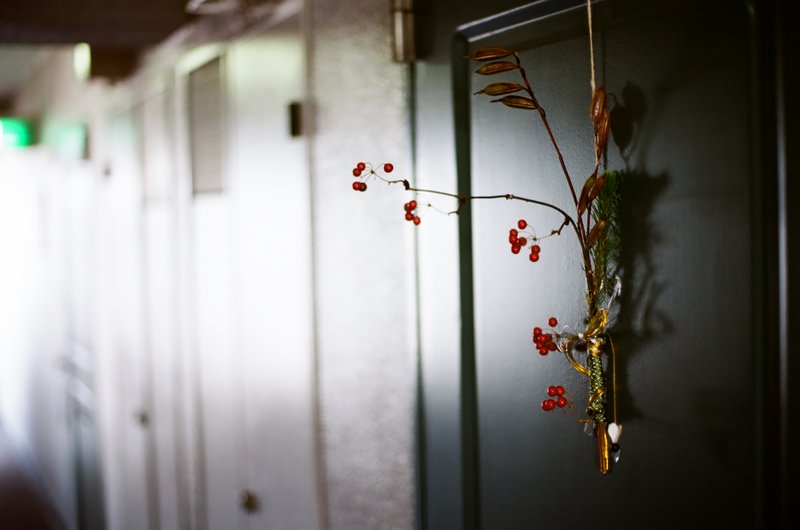
Here is the new year’s decoration (shimekazari) I created at Shiho studio for our front door. Although there’s a common look to commercial ones, including these at Muji, there’s a lot of variety in terms of shape and materials.
Below is Kuge sensei’s lovely arrangement at the entrance to her studio. The tiny black ball with three colorful petals is a traditional toy played with a badminton-like shuttlecock.  Longtime Shiho studio student Hagiwara-san led the workshop and provided these amazing materials, including red berries, pine, paper, and seed pods.
Longtime Shiho studio student Hagiwara-san led the workshop and provided these amazing materials, including red berries, pine, paper, and seed pods.
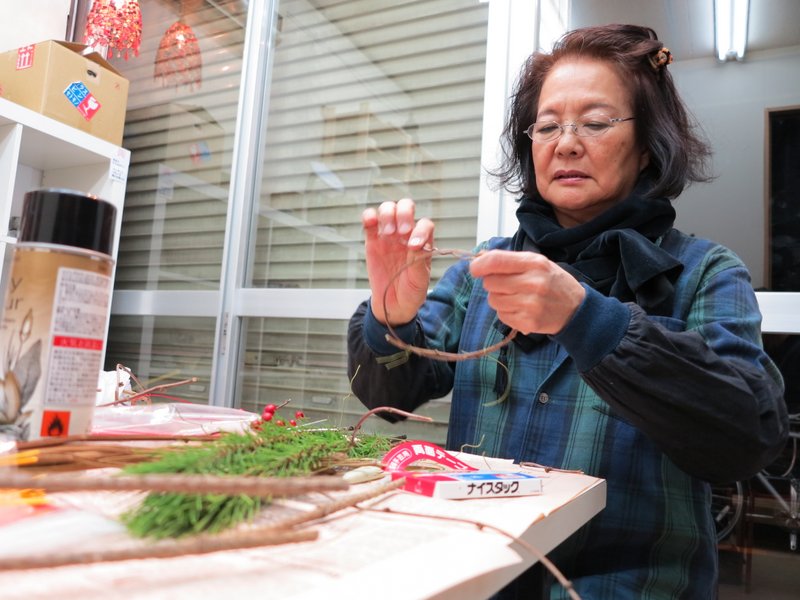
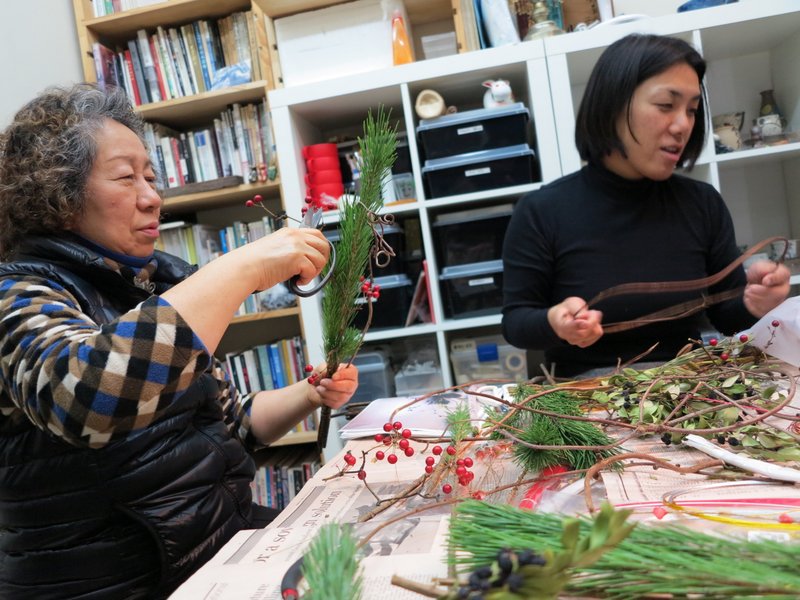
Tokyo dog welcomes the new year on a busy corner
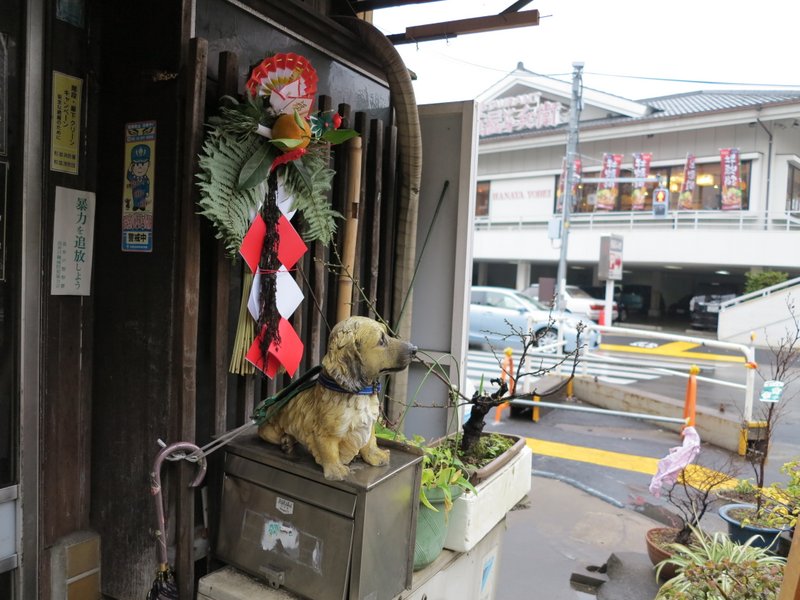
On my way to the sento, I passed this old house on a busy corner, across from a “family restaurant” featuring its own parking lot. In addition to a large sidewalk garden, the home features a welcoming dog above the mail box. I think the dog looks good with the new year decoration hanging above him.
Bright yellow ginkgo leaves line entrance to Hanazono shrine, the quiet heart of Shinjuku
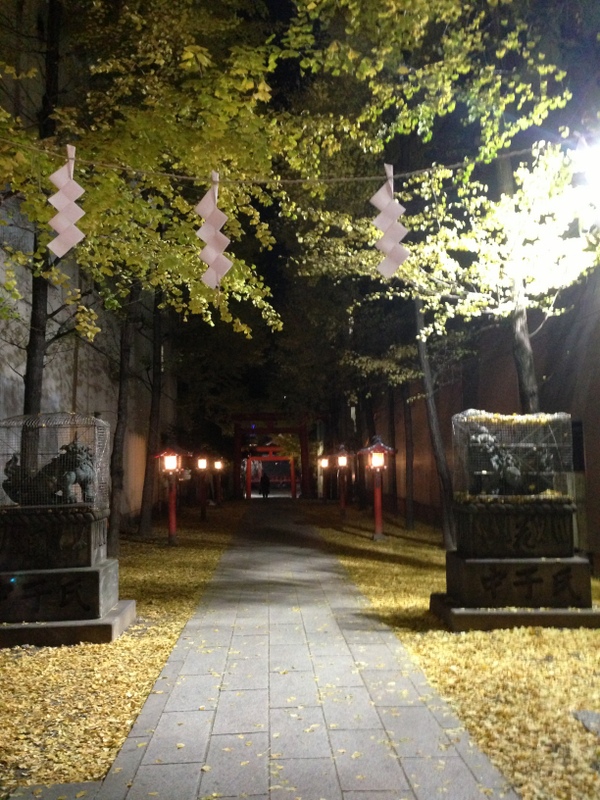
You can offer candy to strangers, but . . .
You can offer candy to strangers, but you can’t make them eat it. Sexy lady quickly rejects tanuki’s gift. Outside of Azabu-juban station. Let’s Welcome Tanuki Back to Tokyo.
Let’s welcome Tanuki back to Tokyo

タヌキさん、東京にお帰りなさい。「Making Friends(友達を作る)」は、東京メトロで起こった違う種類の生物同士の出会いでした。
Making Friends was a true, inter-species encounter in the Tokyo Metro. Click to enlarge.
Distrust turned to Avoidance, then Curiosity, Connect, Reverse, and Unite. For more on S.C.R.O.T.U.M. see my article with Chris from A Small Lab and Jess from Edoble on This Big City.
Bonsai shedding leaves

冬の日光は、室内で植物を撮影するのにいいと思います。
ベランダの庭には、植木鉢が多いです。ですから、室内に持って来るのが簡単です。一つの植物はお客さんを接待するときに使えますし、気分を変えてくれます。盆栽は一番持ち運びがよくて、いくつかの要素が小さな世界を作ってくれます。
The winter sunlight is particularly good for indoor plant portrait photography.
Bonsais are the ultimate in portable and creating an entire, changing world with few elements. Part of gardening involves the overall effect of dozens or hundreds of plants. But part is also the specific plant and season.
As a balcony gardener using containers, I have many small plants that are especially portable. A single indoor plant can welcome a guest or create a mood.
Hanazono shrine offers shade and escape
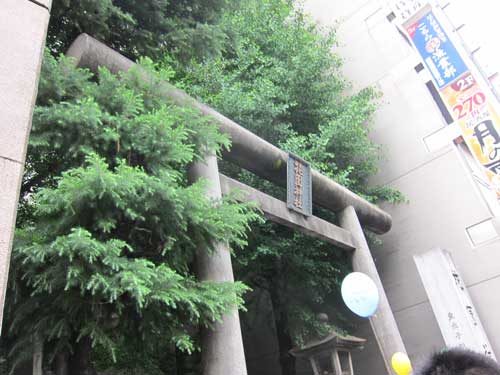
蒸し暑い東京の夏は、日陰と木がとてもいいです。花園神社の入り口は新宿の混んでいる靖国通りの前です。神社はだれでも歓迎します。入ると、交通やネオンからちょっとのがれて、肉体的にも精神的にも一休みできます。
In Tokyo’s hot and humid summer, shade and trees are always welcome. I love how the entrance to Hanazono shrine faces busy Yasukuni Dori in Shinjuku, offering a physical and spiritual respite from traffic, commerce, neon, and host clubs.
Providing a temporary home for the gods in Tokyo: Shimekazari and Kadomatsu for the New Year
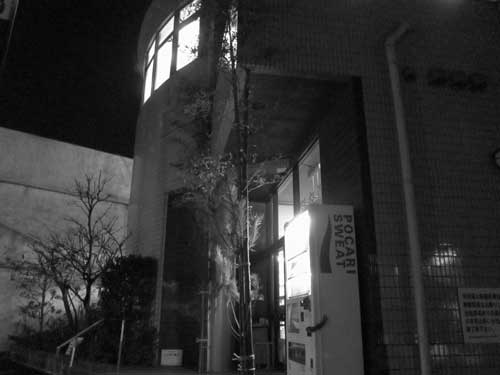
東京のお正月の時だけですが、神様を迎え入れます.
Tokyo residents and small businesses welcome the gods in temporary homes built of bamboo, pine, and plum blossoms.
I love how the best ones are hand-crafted from pine, bamboo, and plum blossoms. They are intended to be temporary homes for the Shinto gods (kami, 神様). I like the idea that you can create a temporary house for the gods to visit at new year. The three heights of the kamomastu represent heaven, humanity, and earth- in descending order. The shimekazari are smaller, with Shinto rope holding charms such as oranges, folded paper, rice straw, and ferns.
Shimekazari (標飾り) and Kadomatsu (門松) are traditional New Year’s ornaments placed on walls and on the sidewalks outside shops and homes. The city simultaneously empties of people and fills with physical connections to mountains and spirits. This year I took photos of the widest variety I could find in the areas I visit on typical days: on a car bumper, outside a sento, next to a wall of cigarette advertisements, on a busy boulevard, outside a barbershop, pachinko parlor, 24 hour convenience store, and a department store.
After the holiday, these decorations should be burned at a shrine. By mid-January, they are already a faded memory.
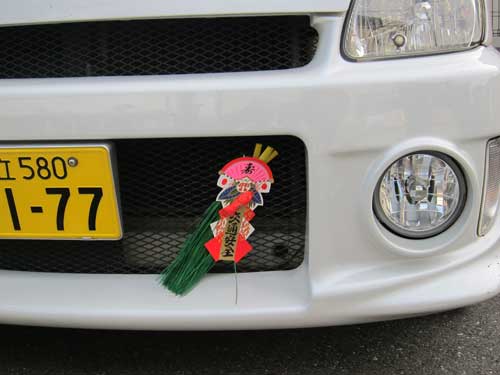
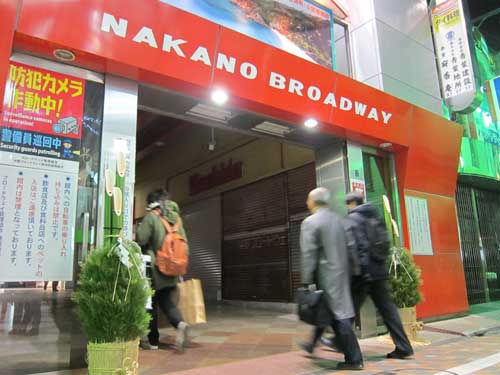

See more photos after the jump.
Welcome rabbit sumo wrestling for 2011

うさぎの相撲は楽しいかな。
Pink Tentacle has assembled a collection of historic new year’s cards (年賀状, nengajou) from the Museum of Fine Arts, Boston. Seeing all these different rabbits featured in vibrant designs with national and cultural messages is a delight and inspiration. The one above is from 1927 1915 (via Twitter’s @hizaga). I wonder whether we’ll be seeing more rabbits this year in Tokyo: as food, companions, or wildlife?
Dreaming of Mount Fuji on January 1

What will you dream about tonight?
今夜何の夢を見ますか?
A very cultured friend told me recently that Japanese celebrate 初夢 (hatsuyume) in addition to 初詣 (hatsumoude). At the very start of the new year, many Japanese visit local or famous shrines and temples to welcome the new year, a practice known as hatsumoude. Hatsuyume refers to the first dream of the new year, and many people wake up on January 2 trying to remember their dreams, which will reflect their fortune for the coming year.
The three luckiest dreams are Mount Fuji, hawk, and eggplant. This tradition dates to early Edo times. Have you ever dreamed of any of these? Will you be paying attention to your dream on the night of January 1, the first full night of the new year?
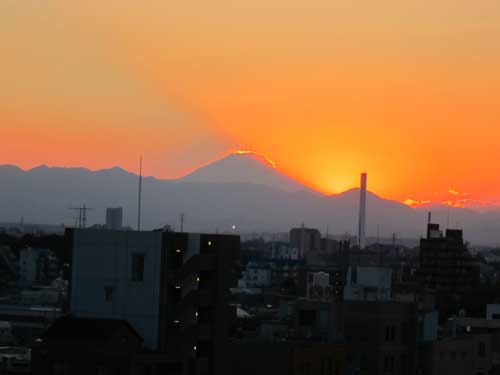
Barren space between sidewalk and Roppongi Hills

どうして六本木ヒルズの入り口は死んでいるのだろう?
Why is the entrance to Roppongi Hills so ugly and uninviting?
Every time I walk from the subway into Roppongi Hills I am shocked at the extremely ugly first view of this mega-complex. In addition to the elevated freeway, pedestrians are greeted by this horrendous, wide, astroturf-covered dead space in front of Roppongi Hills North Tower.
How could this make people want to enter Banana Republic? And what does this say about Mori Building’s vision for integrating their properties into their neighborhoods and communities? I feel that this forgotten and dirty space implies that the real landscape only begins at the podium level and that the North Tower is not of equal status to the rest of the complex, despite being in the front. It’s as if they imagine that their important customers enter the complex only by car.
This lack of respect for pedestrians, neighbors, and context is completely unnecessary. The smallest gesture would improve this space and make it more inviting and alive. If Mori Building reads this post, I hope they will consider improving this entryway to their otherwise well landscaped property. If anything, improving the entrance might also provide an opportunity to consider how to extend their landscape ideas further out into the neighborhood, creating connections with other shops and residents, and building a larger and healthier eco-system that would benefit Mori and their neighborhood.
Last night I attended the last Pecha Kucha Tokyo of the zeros decade, one block west of Roppongi Hills, and remembered that I had taken this photo weeks ago. Each time I am shocked as if for the first time. Outside of the expensive office towers and glittering malls, I wonder how such an ugly neighborhood can be attractive to multinational companies and foreign ex-pats.
Summer vegetables growing on the sidewalk

Walking down a large boulevard in Higashi Koenji, I was surprised to see these potted vegetables on the sidewalk. In addition to ginko trees, this street has many azaleas between the vehicle lanes and the pedestrian sidewalk. In this spot, there’s a semi-permanent row of pots. But these eggplants and tomatoes are an extra row that someone temporarily set up.

I love how seasonal and impromptu this vegetable gardening is. And, after almost two years in Japan, I am still startled that people can place plants they love on the street, and no one eats the vegetables, vandalizes, or steals the plants. A city that’s safe for vegetables and plants is one that also welcomes people.